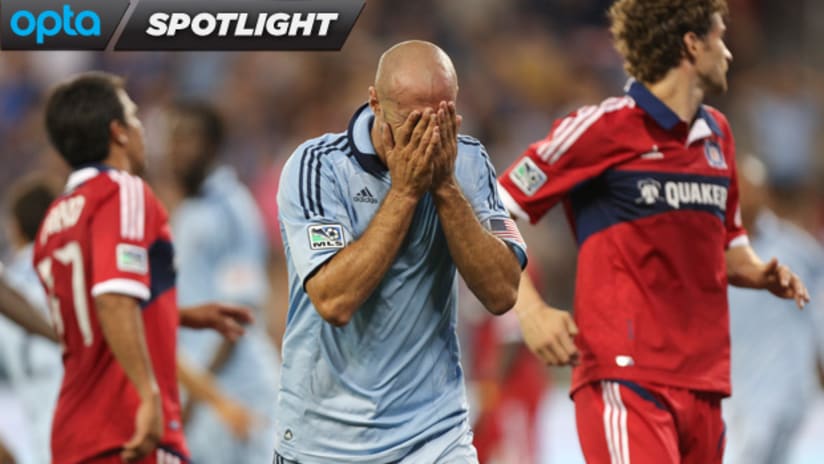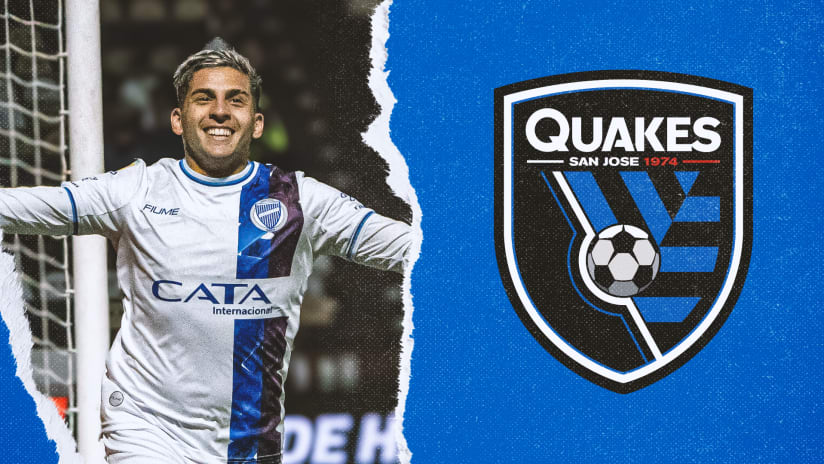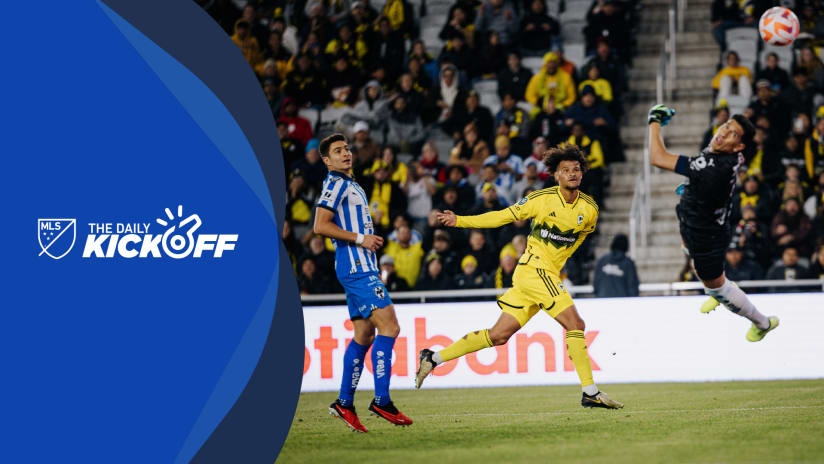Dominance in soccer is a funny thing. After all, a distinct possession advantage, rampant chance creation and lock-down defense only truly matter if in the pursuit of goals.
By just about any statistical definition – except, crucially, the one that matters most – Sporting Kansas City dominated the Chicago Fire in their last meeting at Livestrong Sporting Park on June 29.
HIGHLIGHTS: Pappa's goal the difference at LSP
And yet the Fire won, 1-0, with Marco Pappa finishing off a counterattack to provide the decisive difference between two teams separated by a veritable gulf in statistical supremacy. Sporting, ever the aggressor, racked up positive actions. Meanwhile, Chicago, channeling an oft-utilized strategy for visiting clubs in Kansas City, sat back, content to rely on goalkeeper Sean Johnson and wait for their opportunity to strike at pace.
OPTA CHALKBOARD AND FULL MATCH STATS
So, with KC and the Fire poised to decide first place in the Eastern Conference over the course of 90 minutes Friday night on NBC Sports Network (8:30 pm ET, Live chat on MLSsoccer.com), we examine what that game can tell us about both sides – and just how they might approach a season-defining match.
Dominance does not beget points
Peter Vermes likes to say that it’s the home team’s responsibility to drive the game, and Sporting KC took that message to heart back in June.
Of the 832 passes attempted in that game, Sporting accounted for 513. They completed 410 to the Fire’s 236, including 186 in the opposing half, while Frank Klopas’ side managed just 82 (see diagrams below). They racked up 19 key passes – those that lead to a shot – to Chicago’s seven, and took eight corner kicks while their opponents generated just one.

The heat maps from the match show an unmistakeable pattern: Sporting KC's backline spent most of the game camped around midfield, supporting the home side in possession, with Seth Sinovic and Chance Myers pushing forward down the flanks and into the attacking third when space opened up. Vermes' front line of Teal Bunbury, C.J. Sapong and Kei Kamara barely spent any time outside the Fire's half, and Chicago's heat maps outline their decision wait out the pressure rather than play into Kansas City's hands.
The result was a shot advantage of 20-6 in favor of Sporting and a game that often had the feel of one-way traffic, as Chicago racked up 44 clearances to Kansas City's six and was forced to deal with 23 total crosses as opposed to the two they mustered themselves. Without knowing the score, the game's outcome would appear to be straightforward.
And Kansas City still lost. Why?
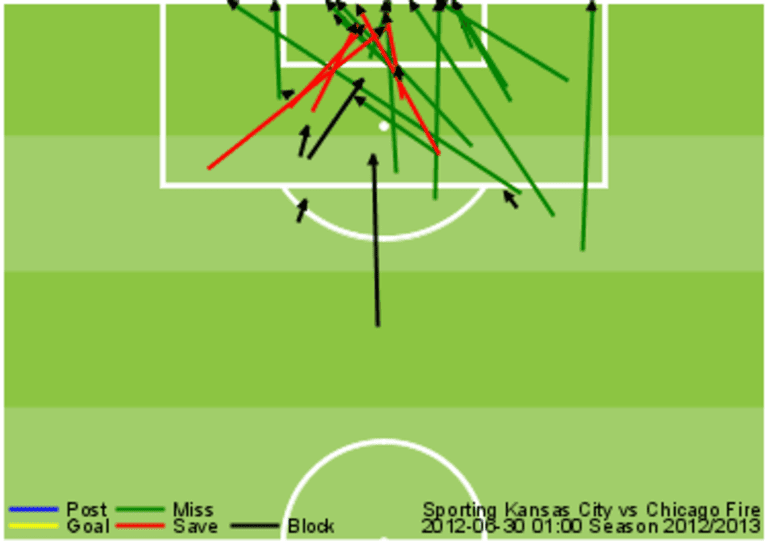
The simple, easily digested answer is a combination of errant finishing (see shot chart at right and exhibits 1A, 1B and 1C) and the aforementioned exploits of Johnson, who made spectacular saves when it mattered most.
More complicated is the notion that playing at Livestrong Sporting Park may not actually be as distinct an advantage for Kansas City as many assume – to wit, Sporting are 8-3-4 at home vs. 8-4-3 on the road – with this game serving as a prime example why that may be the case.
With Chicago bunkered in, Sporting KC's method of chance creation became predictable, as key passes, crosses and shots emanated predominantly from the right side (see diagram below and shot chart). The Fire clearly felt confident that their center back duo of Austin Berry and Arne Friedrich could handle the service coming into the box from wide areas, which proved correct, while Johnson would take care of any outliers that managed to find their way through.
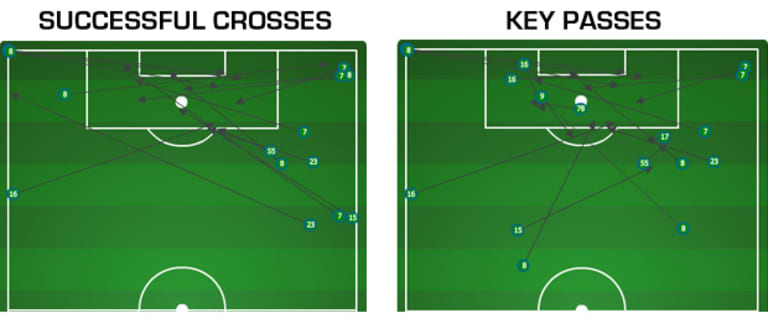
Once Pappa scored the game's only goal – fittingly on a lightning quick counterattack that began when a speculative SKC cross was cleared out of the Fire's own box – Chicago's strategy became even more effective. With the lead, Sporting had no recourse other than to throw numbers forward. And with Klopas' side routing them wide and keeping the build up predictable and manageable, complimented by a few fine saves from Johnson of course, the Fire walked out winners, much to the dismay of the sell-out crowd.
So what does all this tell us about Friday night's match, one that will decide first place in the Eastern Conference as long as the end result is not a draw?
From the Fire's perspective, it seems Klopas is unlikely to play into Vermes' hands, negating Sporting's notorious pressure by inviting them to set up shop in forward positions while unleashing Chris Rolfe, Patrick Nyarko, Sherjill MacDonald and Alvaro Fernandez when the time is right. Meanwhile, Logan Pause seems destined to do what he does best: read the game and break up play in the center of the field, forcing KC into the same patterns they relied on June 29.
On the flip side, all signs point to Graham Zusi slotting into a wide spot in Sporting's 4-3-3 to provide more creative impetus and quality service than Kansas City mustered last time around, with the expectation that their finishing will be up to snuff with a second crack at the Fire at home.
If that's the case, Sporting should be able to avoid a season sweep that would leave them looking up the table at the streaking Fire. But that's no guarantee. As we learned back in June, often times dominance is not enough.

